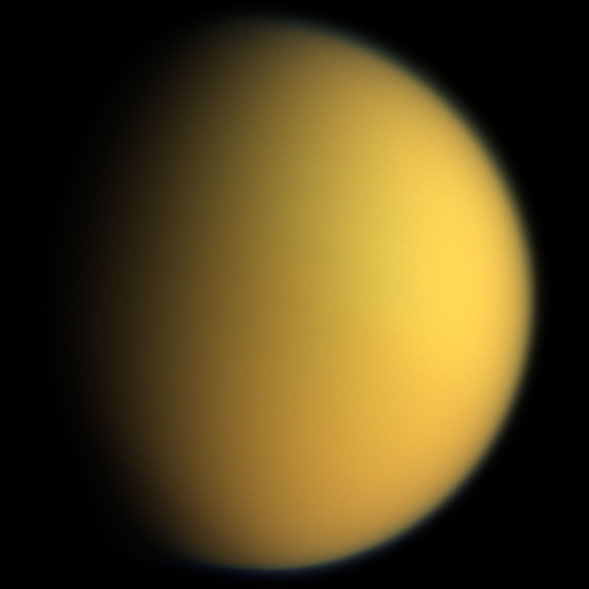 We are literally on the last two days of classes before the start of finals, and most of my classes have their final, big, presentation projects wrapping up. In my astrobiology course, we had to design a fake astrobiology mission. My group decided to focus on the large moon of Saturn named Titan. It's the second largest moon in the Solar System after Jupiter's Ganymede, and it's even larger by volume, though only half as massive, than Mercury, that little chunk of metal being cooked by the Sun.
We are literally on the last two days of classes before the start of finals, and most of my classes have their final, big, presentation projects wrapping up. In my astrobiology course, we had to design a fake astrobiology mission. My group decided to focus on the large moon of Saturn named Titan. It's the second largest moon in the Solar System after Jupiter's Ganymede, and it's even larger by volume, though only half as massive, than Mercury, that little chunk of metal being cooked by the Sun.Titan was discovered in 1655 by a Dutch dude named Christiaan Huygens. I really don't know what his parents were thinking when they tossed that extra a in his name, but I digress. Huygens also contributed to a lot of different fields of study, including optics, engineering, and so on and so forth.
Scientists are looking at Titan to see if there is some possibility of prebiotic (pre-life) chemistry that could lead to some form of life. Of course, being a moon of Saturn and as such being a REALLY long ways away from us, there haven't been a lot of studying of Titan up close and personal.
No comments:
Post a Comment